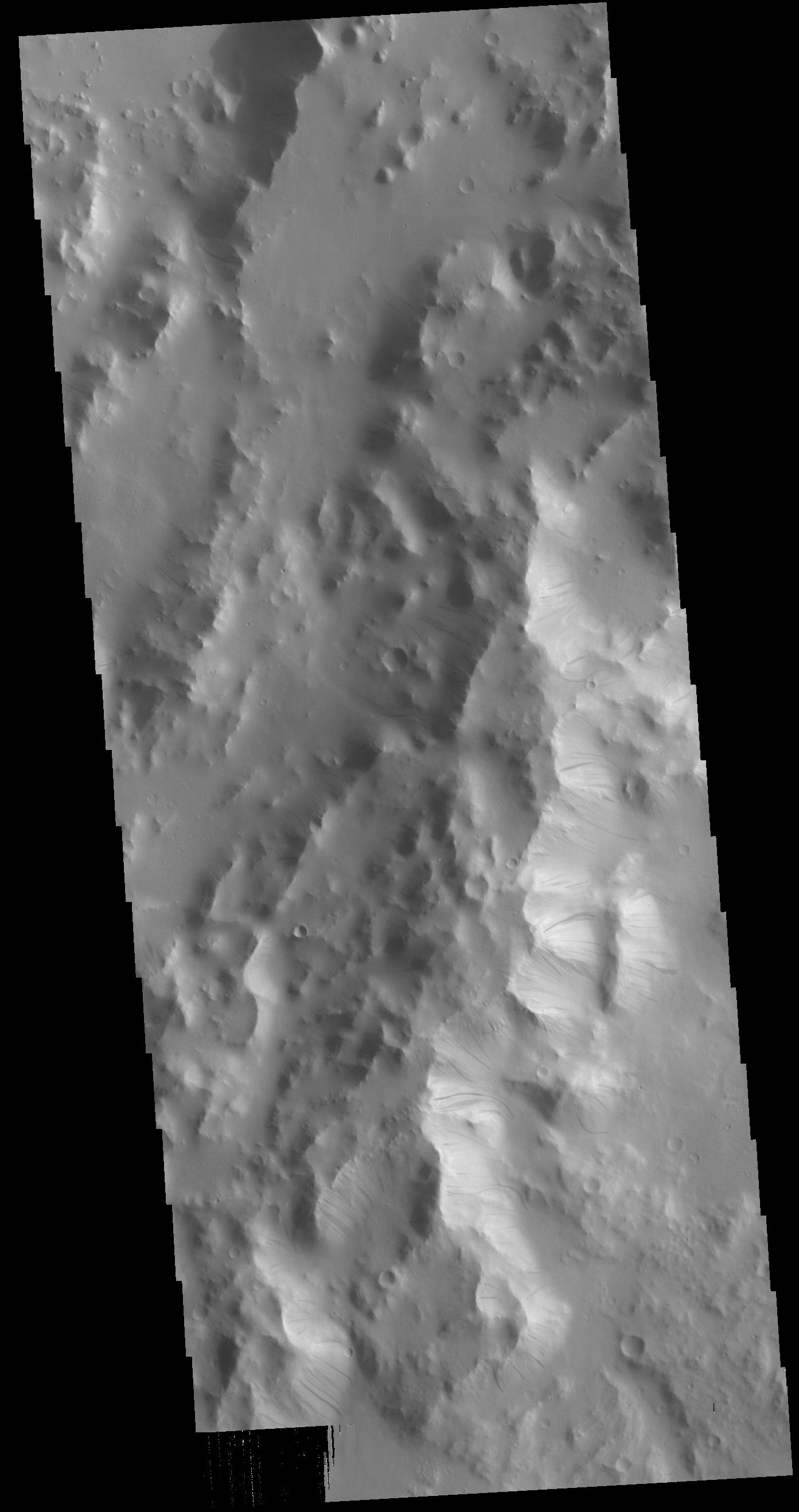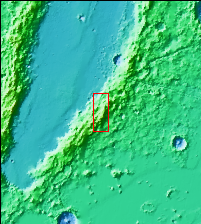
|
Orcus Patera Dark Slope Streaks
- Click the image above for a larger view
- Full-Res JPEG (1393 x 2637) (200.0 kB)
- Full-Res TIFF (1393 x 2637) (2.5 MB)
Caption:

Context image
Today's VIS image is located on the eastern margin of Orcus Patera. Dark slope streaks are present on most ridges in the image. Formation of these features is linked to a change in the surface, either removal of the dusty surface revealing darker rock beneath the dust, or a volatile flow along the cliff face. The mechanism that formed Orcus Patera is unknown. While the term "patera" is tied to volcanic activity, the elongate shape might also have been caused by a low angle meteor impact.
Orbit Number: 79232 Latitude: 12.9315 Longitude: 179.284 Instrument: VIS Captured: 2019-10-25 06:48
Background Info:
Please see the THEMIS Data Citation Note for details on crediting THEMIS images.
NASA's Jet Propulsion Laboratory manages the 2001 Mars Odyssey mission for NASA's Science Mission Directorate, Washington, D.C. The Thermal Emission Imaging System (THEMIS) was developed by Arizona State University, Tempe, in collaboration with Raytheon Santa Barbara Remote Sensing. The THEMIS investigation is led by Dr. Philip Christensen at Arizona State University. Lockheed Martin Astronautics, Denver, is the prime contractor for the Odyssey project, and developed and built the orbiter. Mission operations are conducted jointly from Lockheed Martin and from JPL, a division of the California Institute of Technology in Pasadena.
Cataloging Keywords:
| Name | Value | Additional Values |
|---|---|---|
| Target | Mars | |
| System | ||
| Target Type | Planet | |
| Mission | 2001 Mars Odyssey | |
| Instrument Host | Mars Odyssey | |
| Host Type | Orbiter | |
| Instrument | Thermal Emission Imaging System (THEMIS) | |
| Detector | ||
| Extra Keywords | Dust, Grayscale, Impact, Thermal, Volcano | |
| Acquisition Date | ||
| Release Date | 2020-01-17 | |
| Date in Caption | 2019-10-25 | |
| Image Credit | NASA/JPL-Caltech/ASU | |
| Source | photojournal.jpl.nasa.gov/catalog/PIA23640 | |
| Identifier | PIA23640 | |
